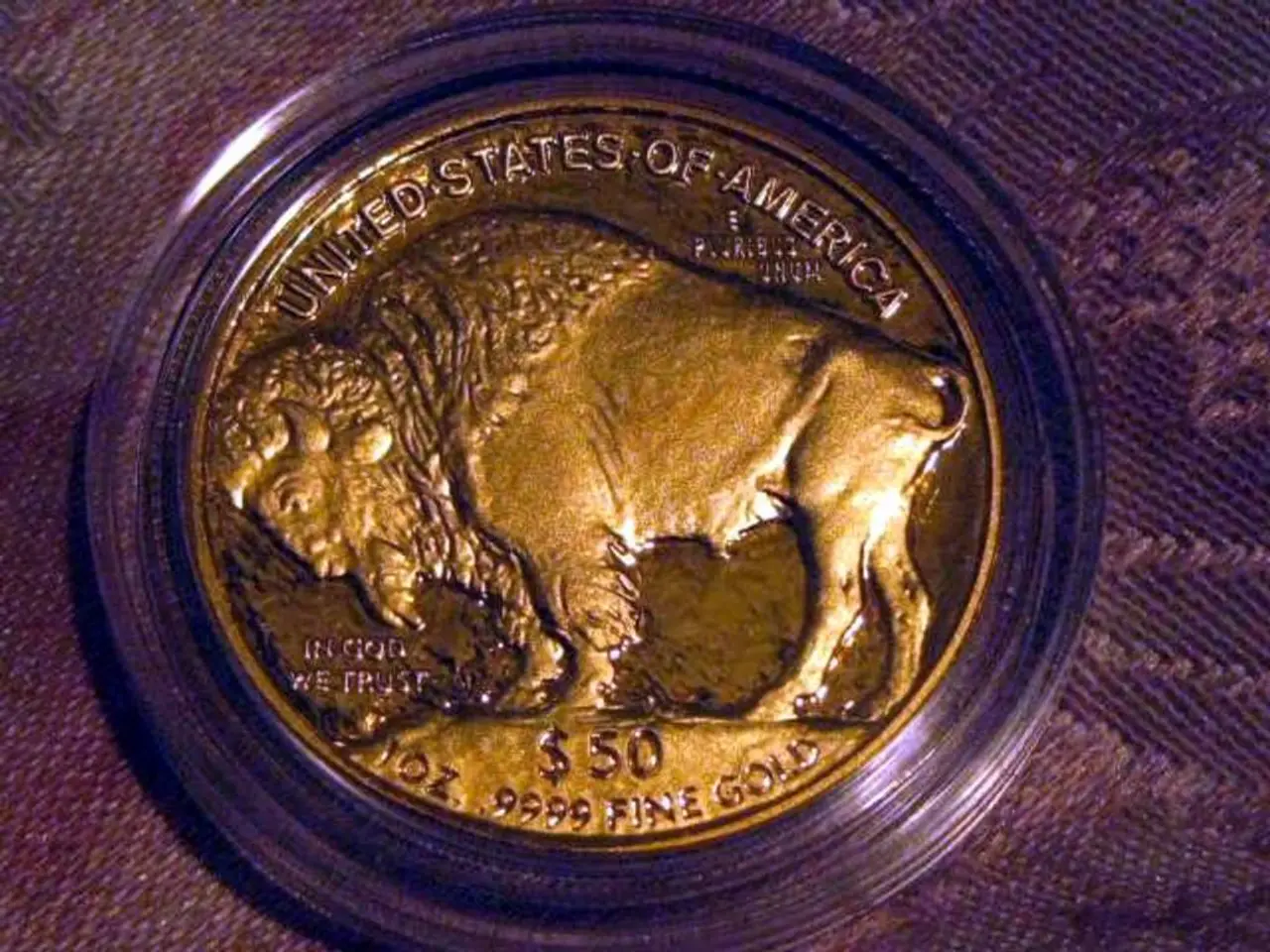Digital asset personnel strongly oppose digital assets' implementation
The US dollar remains the dominant global reserve currency, but a shift towards a more multipolar system is gradually emerging, according to Geoffrey Yu, senior EMEA markets strategist at BNY. Potential alternatives include the euro, the Chinese renminbi (RMB), gold, digital currencies, and proposals like a BRICS currency or a multipolar currency system.
The euro, currently accounting for about 20% of global foreign exchange reserves, is the leading secondary reserve currency. Its strengths lie in its large economic size, strong central bank, and robust financial markets. However, its ability to challenge the dollar is limited by internal political and economic fragmentation in the eurozone.
The RMB has grown as a reserve currency since its inclusion in the IMF's SDR basket in 2016, making up roughly 2% of global reserves. China's economic size, trade surplus, and reserves support its role, but capital controls, limited currency convertibility, geopolitical tensions, and lack of full transparency hinder its global acceptance as a neutral reserve currency. The renminbi is significant especially among Global South countries and likely to grow with digital RMB development.
Central banks continue to rely on gold as a safe-haven asset and key hedge against currency volatility. Some countries, including BRICS members, emphasize gold-backed monetary ideas, reflecting a partial move away from purely fiat currency dominance.
Blockchain and distributed ledger technology, alongside central bank digital currencies (CBDCs), present a technology-driven alternative that could enable faster, lower-cost cross-border payments and reduce dollar reliance. Examples include China’s digital yuan (e-CNY) and the European Central Bank’s digital euro initiatives.
The BRICS alliance has explored creating shared currency or payment systems to conduct trade outside the dollar, including debates about gold backing and independent monetary frameworks. However, significant structural challenges remain, such as political divergence, legal framework weaknesses, and geopolitical tensions among members.
In sum, while the US dollar remains dominant, a multipolar reserve currency system is gradually emerging, incorporating the euro and renminbi as key players, supplemented by gold and digital currencies. The transition faces structural, political, and technological obstacles, making immediate replacement unlikely but diversification increasingly evident.
This evolving landscape points to a likely future of currency diversification and multipolarity, not a sudden dethroning of the dollar. The role of gold, digital currencies, and the BRICS currency in this transition remains to be seen.
Summary Table
| Alternative | Current Reserve Share | Strengths | Limitations | |--------------------------|-----------------------|--------------------------------------------|------------------------------------------------| | US Dollar | ~60% | Deep markets, global acceptance, liquidity| High US debt, political volatility | | Euro | ~20% | Large economy, strong central bank | Political fragmentation in EU | | Renminbi (Chinese Yuan) | ~2-6% | Large economy, trade surplus | Capital controls, limited convertibility, geopolitics | | Gold | ~16% (reserves) | Safe haven, hedge against risk | Limited liquidity, non-fiat | | Digital Currencies (CBDCs)| Emerging | Fast, low-cost cross-border payments | Early stage, regulatory uncertainty | | BRICS Currency | Proposed | Multipolarity, gold backing proposed | Internal political/legal challenges |
- The euro and the Chinese renminbi (RMB) have risen as potential alternatives to the US dollar as dominant global reserve currencies, with the RMB making up roughly 2% of global reserves since its inclusion in the IMF's SDR basket in 2016.
- Gold, despite accounting for about 16% of global foreign exchange reserves, continues to serve as a safe-haven asset for central banks, with some countries like BRICS members emphasizing gold-backed monetary ideas.
- Advances in blockchain and distributed ledger technology, along with central bank digital currencies (CBDCs), offer a technology-driven alternative, potentially enabling faster, lower-cost cross-border payments and reducing dollar reliance, as seen in initiatives like China’s digital yuan (e-CNY) and the European Central Bank’s digital euro.
- The BRICS alliance has debated the creation of shared currency or payment systems, aiming to conduct trade outside the dollar, but faces significant structural challenges such as political divergence, legal framework weaknesses, and geopolitical tensions among members.
- The US dollar remains dominant, with deep markets, global acceptance, and liquidity, but faces limitations due to high US debt and political volatility. On the other hand, the euro's large economic size, strong central bank, and robust financial markets are limited by internal political and economic fragmentation in the eurozone.
- The renminbi is significant among Global South countries and is likely to grow with digital RMB development, but is hindered by capital controls, limited currency convertibility, geopolitical tensions, and lack of full transparency.
- While a multipolar reserve currency system containing the euro and renminbi as key players, supplemented by gold and digital currencies, is gradually emerging, the transition faces obstacles such as political, structural, and technological issues, making immediate replacement unlikely but diversification increasingly evident.
- The future of currency looks likely to involve currency diversification and multipolarity, with the role of gold, digital currencies, and the BRICS currency in this transition remaining to be seen.




